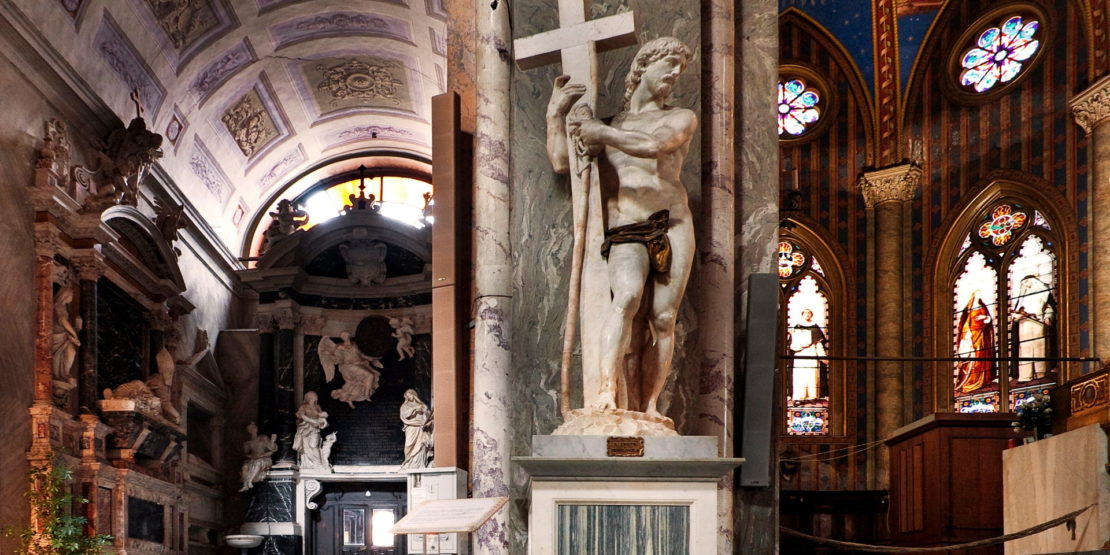Top Ten Churches to Visit in Rome
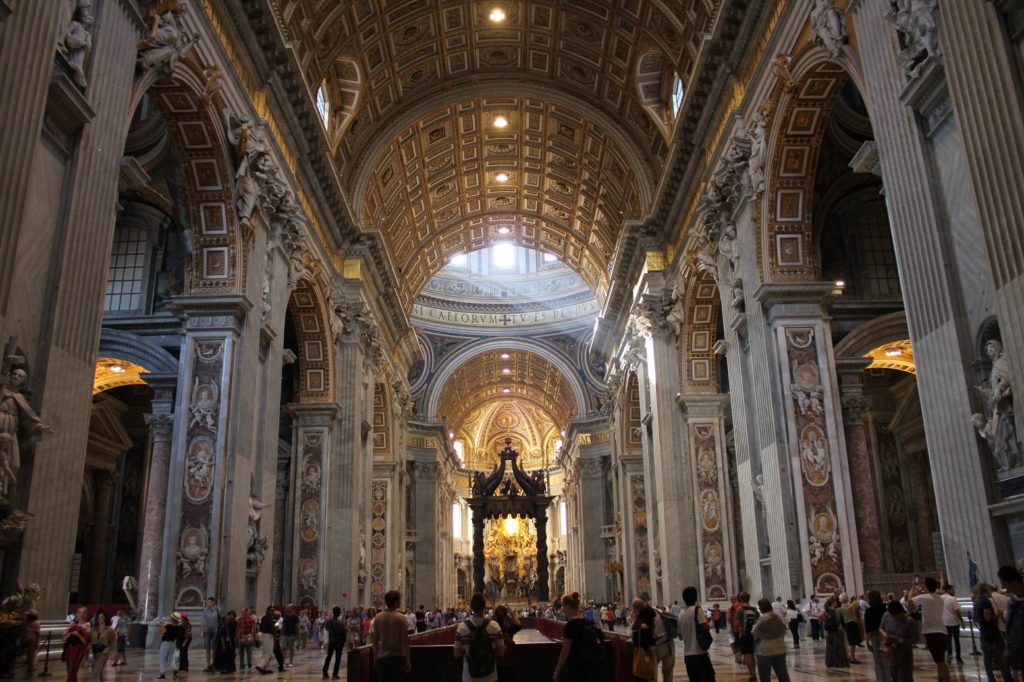
St. Peter’s Basilica (Piazza San Pietro)
The greatest church in Christendom. Too much to say and describe without writing at least a few paragraphs, but suffice to say that it is a masterpiece of architecture and under the iconic high altar rest the bones of the Prince of the Apostles.
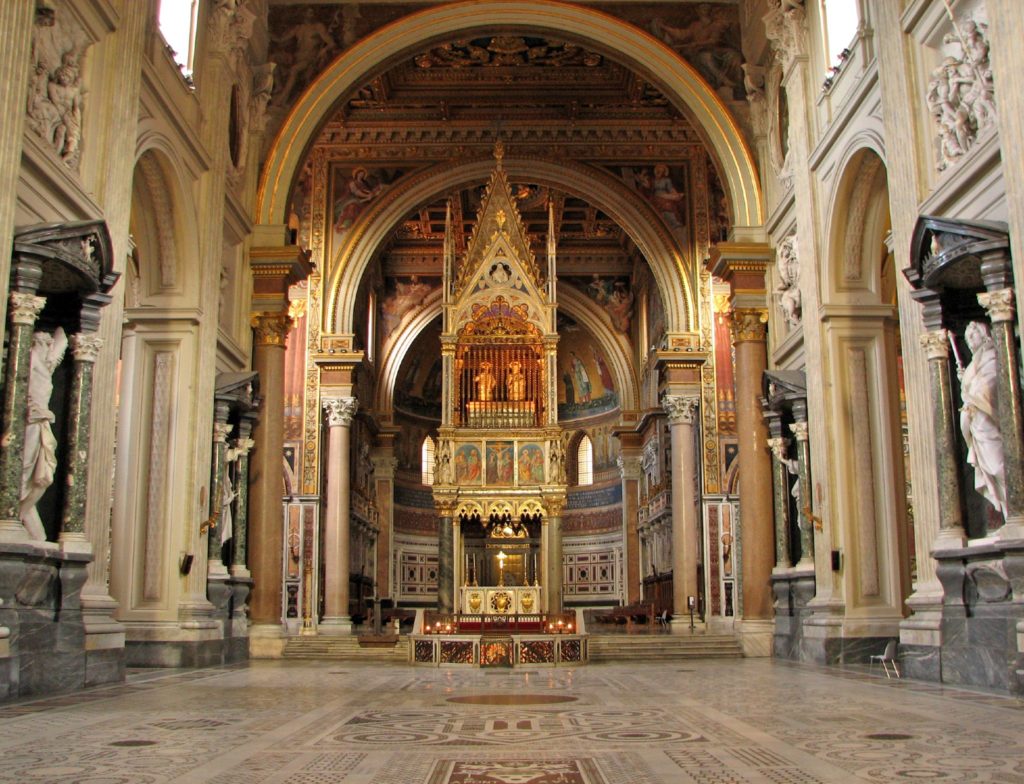
St. John Lateran (Piazza di San Giovanni in Laterano, 4)
The official title of the church is Papal Archbasilica of the Most Holy Savior and Saints John the Baptist and the Evangelist in the Lateran, and such a chain of honorifics is justified for the Cathedral of Rome. Notable are its beautiful Cosmatesque floor, the high altar that contains the skulls of Saints Peter and Paul in twin reliquaries, and the connected Baptistery—the first in the world—and the Holy Stairs and Sancta Sanctorum, formerly part of the (now destroyed) Lateran Palace.
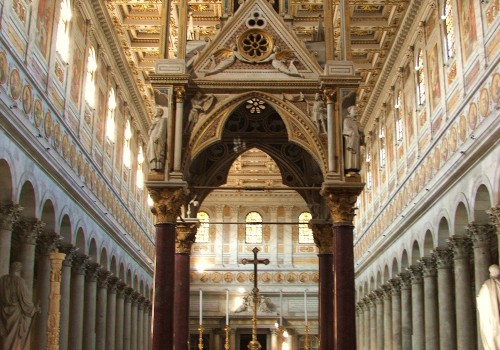
St. Paul’s Outside the Walls (Piazzale San Paolo, 1)
Originally founded by Constantine over the burial place of Saint Paul, its current form is the result of a nineteenth-century reconstruction that was necessary because of a catastrophic fire in 1823. Nevertheless, it retains the rather primitive character of a Roman basilica, with a grand central nave and unadorned columns. The mosaics that survived the fire date from the 400s.
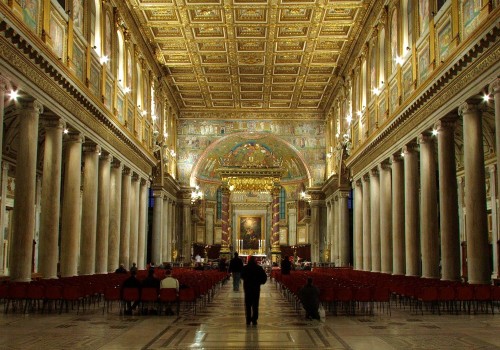
St. Mary Major (Piazza del Esquilino, 34)
One of Rome’s five papal basilicas, Santa Maria Maggiore is the largest church dedicated to Mary in Rome, and houses an important relic under its high altar: the crib in which the Child Jesus rested in Bethlehem. A side chapel contains an icon beloved of the Roman people, “Salus Populi Romani.”
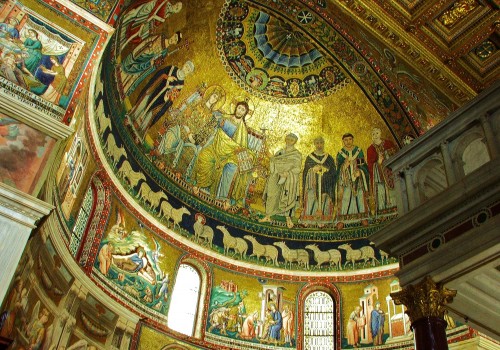
Santa Maria in Trastevere (Piazza di Santa Maria in Trastevere)
Santa Maria in Trastevere is one of Rome’s oldest churches and believed to be the first church in the world where Mass was publicly celebrated after the legalization of Christianity in 313 AD. It originally dates from the late third to the early fourth century but was rebuilt in the twelfth century. The church is famous for a Byzantine mosaic behind the altar and a number of medieval mosaics. The piazza has a beautiful octagonal fountain.
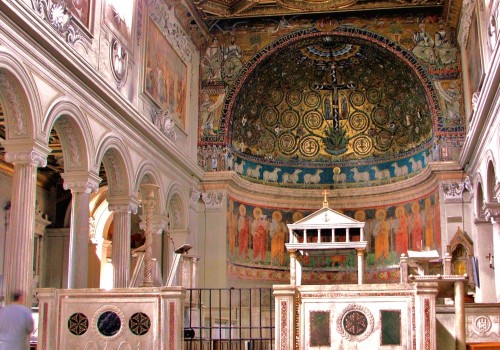
San Clemente (Via Labicana, 95)
San Clemente, near the Coliseum, is a perfect example of how history still exists in layers in Rome’s churches. The current twelfth century church features probably the most beautiful mosaic in Rome, and sits on top of a fourth century church built over a first century Christian meeting place that’s above a first century BC Mithraic temple and school.
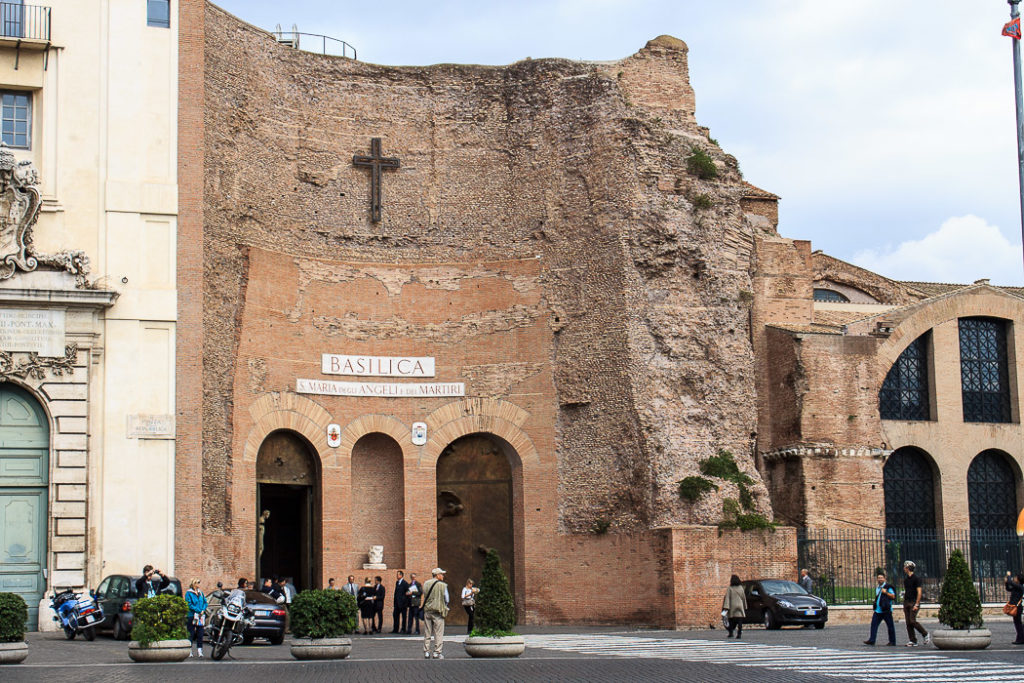
Santa Maria degli Angeli e dei Martiri (Piazza della Repubblica)
This church was constructed (according to plans drawn up by Michelangelo) inside the ruins of the Baths of Diocletian. The layout is unique, in that the transept, which runs crosswise to the nave, is longer. It also houses a fascinating solar median that was formerly used to calculate the time in Renaissance to early modern Rome.
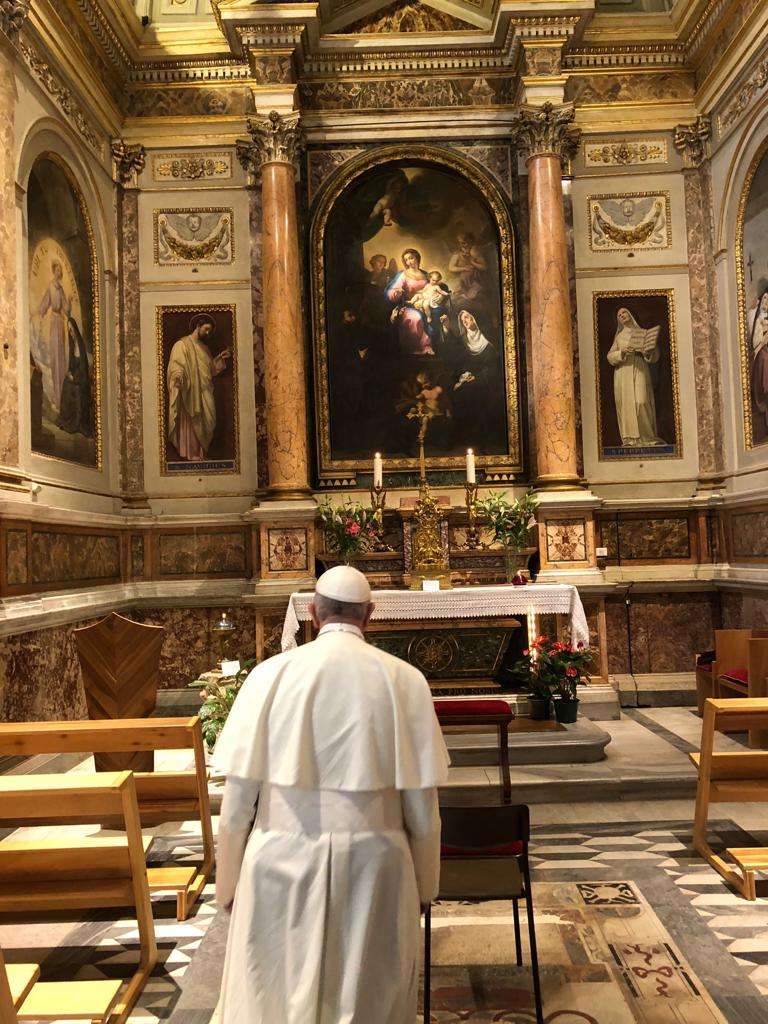
Sant’Agostino (Piazza di Sant’Agostino)
One of the first Roman churches built during the Renaissance, it holds the tomb of Saint Monica, Saint Augustine’s mother. There is also a very popular devotional statue inside, Nostra Signora del Parto, a devotion to Our Lady as protectress of pregnant women and mothers.
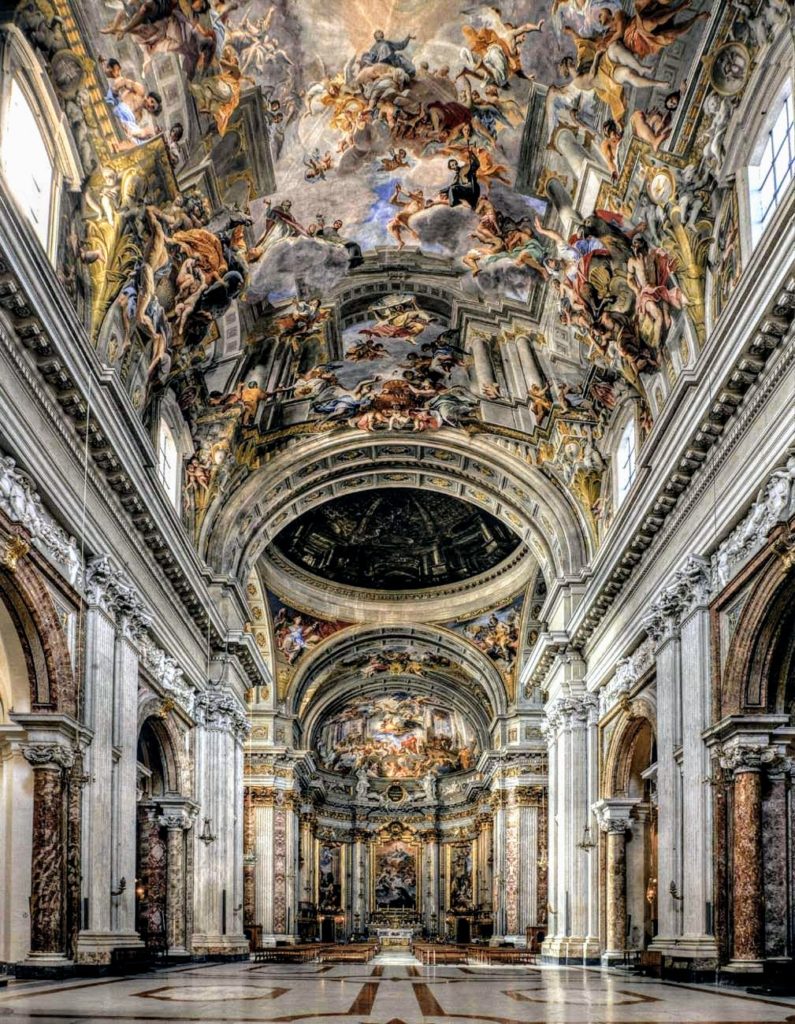
Sant’Ignazio (Via del Caravita, 8a)
Another example of the exuberant Baroque style that the Jesuits popularized throughout Europe, Sant’Ignazio is a worthy companion of the nearby Gesù. The bodies of Jesuit saints John Berchmans and Aloysius Gonzaga are entombed under side altars inside.
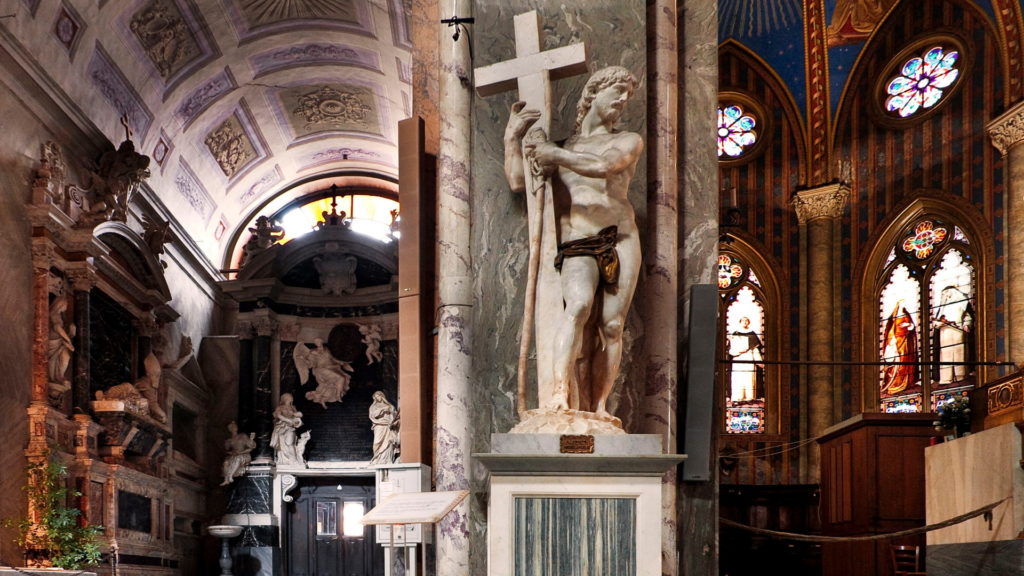
Santa Maria sopra Minerva (Piazza della Minerva, 42)
Santa Maria sopra Minerva is one of Rome’s only Gothic style churches. It was built in the thirteenth century over what was believed to have been the Temple of Minerva (actually the Temple of Isis). Inside is a sculpture by Michelangelo and the tombs of Saint Catherine, Fra Angelico, and some of the Medici popes. Outside is a Bernini sculpture of an elephant with an obelisk on its back.
